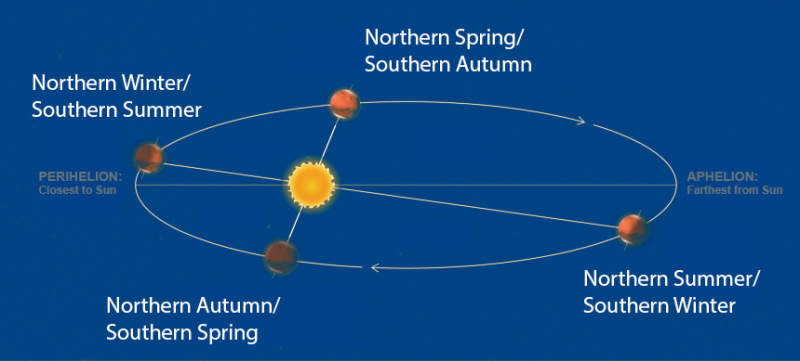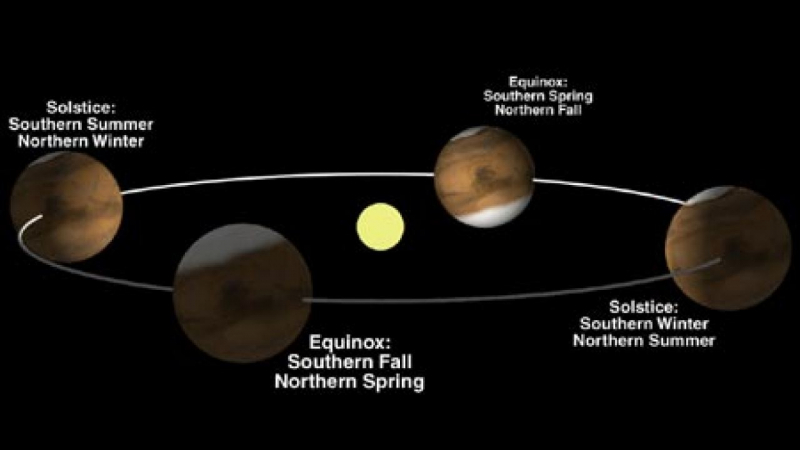Mars Has Seasons

Mars has four different seasons, just like Earth. The Martian year is nearly twice as long as the Earth's, though, thus each season lasts roughly twice as long. Its Southern Hemisphere is slanted towards the Sun when Mars is closest to the Sun, while its Northern Hemisphere is inclined towards the Sun when Mars is farthest from the Sun. Because of this, the southern summer is substantially hotter than the northern summer. The greatest storms are sparked by the Southern Hemisphere's additional heat, which increases turbulence and strengthens winds.
The polar ice cap begins to shrink in the spring and may potentially completely vanish by the summer. The atmosphere becomes thicker as a result of the carbon dioxide emitted by the melting glaciers. The polar cap of that hemisphere begins to grow as autumn arrives as temperatures fall, occasionally reaching the middle latitudes in winter. Clouds can form in the northern summer, especially around the summits of volcanoes. At other times of the year, the tropics, the area on either side of the equator, can generate heat that can cause cloud bands to form in this region, much like they do on Earth. A few of these clouds may be seen by Beagle 2. However, there is never any rain on Mars due to dust clouds, however, ice coatings may occasionally appear on the planet's surface. Mars has freezing temperatures, even in the summer, with lows of -140°C. The occasional high of 20°C, nevertheless, might finally draw tourists.
Seasons of Mars: Spring, Summer, Autumn, Winter















